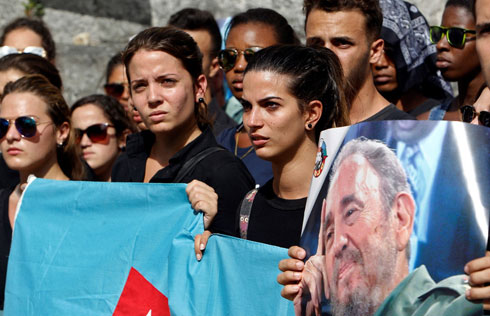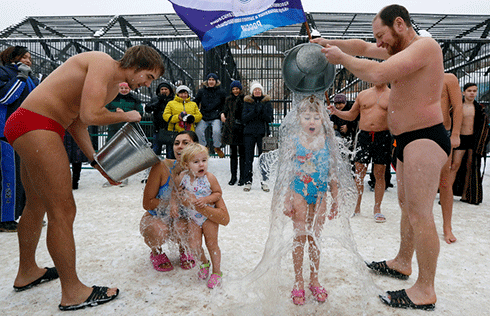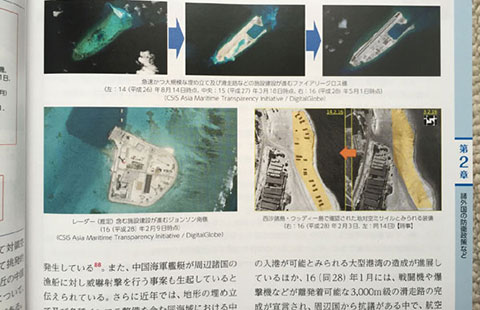Chinese assistance gives earthquake victim chance to walk again
Editor's note: In April, 28-year-old Ecuadorean Santiago Navarrete had his right leg amputated after being injured in a 7.8-magnitude earthquake. Thanks to Beijing-based international disaster relief NGO Pearl Humanitarian Rescue, he now wears a prosthesis. This is the story of how Navarette lost his leg, but found a new love for a far-flung country.
Had she not been carrying a giant plush panda, Laura Mendez might have gone unnoticed as she walked past the presidential palace of Ecuador in Quito with her son, Santiago Navarrete, and their Colombian friend Nicolay Fonseca.
Fonseca is the Latin America representative for Pearl Humanitarian Rescue, an international disaster relief NGO established in Beijing last year.
President Xi Jinping and his Ecuadorean counterpart Rafael Correa were meeting inside the palace. It was Nov 18 and, for the first time in history, a Chinese head of state was visiting Ecuador.
Seven months before, on April 16, China had provided $2 million in emergency cash and 60 million yuan ($8.69 million) in humanitarian aid after the most devastating earthquake since 1949 hit Ecuador's northwest, claiming 673 lives and injuring more than 27,000. Among the injured was 28-year-old Navarrete, a university student from Quito.
He was on vacation with his best friend in the small coastal town of Canoa, about 170 kilometers from Quito and close to the 7.8-magnitude quake's epicenter in Pedernales.
When it struck at about 6:58 pm, Navarette was showering after a swim in the sea. The hotel he was staying in collapsed, burying him and killing his friend.
He was found seven hours later, at about 3 am. But it wasn't until 7 am that he was freed from the rubble by Ecuador's national rescue team, led by Jose Serrano, minister of internal affairs, who coordinated the rescue efforts on site.
A military helicopter rushed him to a hospital in Quayaquil, the largest city in Ecuador, but his right leg was badly infected and had to be amputated.
Four days later, a nine-member medical team from PHR led by Xue Yu, its founder, arrived in Pedernales.
Using the experience they had gained from the Nepal earthquake last year, the team quickly established a base, distributed medication and provided food.
Serrano, the minister, was impressed with the way they coordinated different resources and negotiated with the disparate organizations on the scene, including branches of the UN.

Having not had to deal with a major disaster for more than 60 years, since a 6.8-magnitude earthquake killed 5,050 people on Aug 5, 1949, Ecuador national rescue team found itself out of practice and outperformed by the PHR medics.
Seeing this, Serrano made the decision to invite Xue and his team to attend working meetings with generals and government officials, and even authorized them to use military helicopters. PHR is the only international NGO to be integrated into the Ecuadorean government's rescue work in this way.
After 12 days of intensive effort, PHR finished its work in Ecuador. In total, they had treated 2,600 injured people, spending $160,000 in a joint effort with the China Poverty Relief Foundation.
But before they left, Serrano suggested Xue check on the first man he had rescued - Navarrete, who had been transferred to a hospital in Quito. The minister had learned about the student's amputation, and was anxious that Ecuador didn't have the capacity to manufacture and mount artificial limbs. He hoped his new found Chinese friends might be able to help.
Despite having faced the trauma of losing his leg, Navarrete was optimistic about being fitted with a prosthetic. Xue gave him a hug, promised to help and bought him a giant plush panda from a local Chinese supplier.
In the meantime, PHR hired a fluent Chinese speaker from Colombia called Nicolay Fonseca, to work in Ecuador as a project liaison officer, searching for others in need of artificial limbs. "We are trying to identify more people who could benefit from this project, since not all of the injured are suitable for artificial limbs and we need to do a medical evaluation of them first," he said, adding that five other injured people are currently undergoing evaluation.
Fortunately, Navarrete was able to have a new leg fitted. Over the following three months, PHR spent $9,500 working with the Hermano Miguel Foundation in Ecuador and a prosthesis workshop in the US to fabricate and mount the new leg.
"Mid-and-long-term assistance is actually PHR's main mission," Xue said. "This is similar to what we have done for the people in Wenchuan."
Before Nepal and Ecuador, Xue and his family had sponsored more than 1,000 orphans who lost their parents in the Wenchuan earthquake of 2008, which killed almost 69,000 people in Sichuan province alone.
Navarrete knows that without Chinese assistance he might never have walked again.
When he learned that President Xi was visiting Quito, he and his mother, Laura Mendez, hoped to express their gratitude in person, which is why they were outside the presidential palace on Nov 18.
They brought the giant plush giant panda and a letter Navarette had written to Xi.
"I am the luckiest one among all unlucky people who suffered the earthquake in April; not only because I was the first to be rescued by our national rescue team, but also because I have obtained a China leg with the help of Pearl Humanitarian Rescue from China," he wrote.
"I would like to take the opportunity of your visit to my country, Ecuador, to express my gratitude to you and the very kind Chinese people. Your people came from a country 10,000 miles away, provided us with medical assistance and created plans to mount artificial limbs for the injured. All this has made it possible for me to stand up again with the courage and confidence to continue in life. Thank you for giving me this beautiful life."
However, the mother and son were disappointed, as Xi stayed less than 24 hours in Quito and could not meet with them.
But with his "China leg", Navarette is determined to live his life as never before. Using his major in transportation management, he now works for the Ecuadorean interior ministry's department of motor vehicles. His knowledge of China has grown as well.
He now knows of Coca-Codo-Sinclair, a $2.3 billion hydraulic power station in eastern Ecuador built by Sinohydro Corporation, that is the largest Chinese investment project in the country and can provide one third of its electricity needs.
Navarette is getting married in April, one year after his new life began. He and his fiancee Nathaly Gordillo are hoping to honeymoon in Beijing, so that they can be reunited with their friends at PHR.
They would like to visit the Great Wall and see Changchun, where the iconic Red Flag car brand is made.
It is still Navarette's wish to meet with President Xi and express an ordinary Ecuadorean's thanks to him. But whether he does or not, he will have his giant plush panda with him. That panda has become his mascot. Forever.
larrylee@chinadailyusa.com
|
|
|
Navarrete is happy with his "China leg". Provided To China Daily |
|
Navarrete receives a plush giant panda as a gift from Pearl Humanitarian Rescue founder Xue Yu in a hospital in Quito, Ecuador. Provided To China Daily |
























